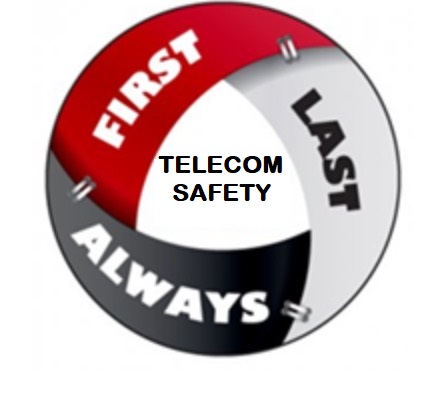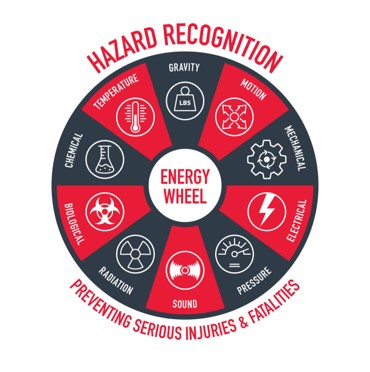Information
-
Work Site Location
-
Date of Observation
-
Job / Task
-
Observer's Name
-
Employee(s) Observed
-
Primary Contact for the Job
-
Clearance or HLH
-
Contract Partner Involved?
Rules and Procedures
-
Prepare For The Observation By Identifying The Activities To Be Observed; and Review The Applicable Safety Rules and/or Procedures Prior To The Observation. *Utilization Of Rules And Procedures Alone Will Not Eliminate The Potential For An Error. It Is Imperative To Use Human Performance Tools During Any Work Evolution To Avoid Unplanned Events.
SIF Precursors
-
SIF Precursors are detectable events, conditions or actions that are warning signs of the potential for a serious injury or fatality (SIF) if not properly mitigated. The most important thing to understand about SIF precursors is that they can be identified and mitigated before a SIF occurs.
What does leadership engagement look like? The key to a leadership engagement is the use of open-ended questions - where the answer is not just “yes” or "no”
-
o Pre-job discussion - What are the key take-aways from the pre-job discussion?
o Risk - What makes you nervous about the work today? What potential injuries are the workers exposed to? If the worst thing happens, what is in place to keep everyone safe?
o Procedure Use and Adherence - What would be a critical step in work plan that could result in a mistake?
o Stop Work - What would cause this work to be stopped today?
o Unexpected Conditions - What aspect of the job you cannot perform as planned?
o Ask about specific challenges. Showing interest and empathy creates genuine connection.
o Ask what improvements are needed; encourage less-experienced employees to share ideas.
o Employees should walk away from the engagement knowing they are valued, and their input will make a difference.
SIF Precursor Questions
-
Safe Work Procedure - Workers cannot express the core elements of the safe/standard workplan for their task (Weight +3)
-
Hazard Recognition - Workers do not recognize hazards or properly evaluate the severity of risks (Weight +2)
-
Departure From Routine - Unfamiliar or unseen task or job site conditions that depart from the well established routine (Weight +3)
-
Plan to Address Change - Workers do not stop and reassess conditions when work changes from what is planned (Weight +1)
-
Safety Attitudes - Workers demonstrate priority of productivity, heroic tendencies, vulnerability, fatalism, or summit fever (Weight +1)
-
Rules and Procedures - Adequate rules are communicated and documented but not followed by workers. The correct procedure is documented and communicated to workers but they are not followed. (Weight +3)
-
Familiarity with Task - Workers are not familiar with task expectations and performance standards because of lack of experience or significant procedural change. (Weight +2)
-
Risk Normalization - Lower perception of risk or higher risk tolerance resulting from repeated exposures. Tied to procedural drift. (Weight +3)
-
Productivity Pressure - Workers feel and unusual amount of pressure to work quickly and complete their task. (Weight +3)
-
Perceived Safety Culture - Lessons learned from previous projects and events are not incorporated into planning and execution. (Weight +3)
-
Stop Work Execution - Workers do not have the ability, or management does not encourage, stopping work to address hazards. (Weight +2)
-
Workers Inactive In Safety - Workers are not engaged with or diligently participating in safety activities. (Weight +2)
-
Pre-Task Plan - Workers have not completed an adequate pre-task safety plan. (Weight +3)
Safety Observation ("Coachable Gap" does not mean an employee should be disciplined or broke any rules. It is anytime there is an opportunity to improve workplace safety)
Personnel
-
Employee(s) qualified to perform task or being coached by a qualified person?
Human Performance
-
Human Performance (HU) Tools and Traps discussed - not merely stated, but discussed?
Pre-Job Brief - Job Hazard Analysis (JHA)
-
Emergency Action Plan (EAP)
-
Employee(s) demonstrate understanding of work scope and sequence?
-
Employee(s) demonstrate knowledge of hazards associated with the job to include critical tasks?
-
Employee(s) understand elimination strategy; mitigating risk; and take special precautions?
-
Proper energy source controls?
-
Hazard Model and Stuff That can Kill You (STKY) discussed?
-
Hazard Model discussion questions:
o What is the stuff that can kill you on your jobsite or task?
o What controls are in place to protect you from the Stuff That can Kill You?
o Is that enough protection or do you need more? -
All employees signed on to JHA - understood and discussed?
Personal Protective Equipment - PPE and Insulated Protective Equipment - IPE
-
Employee(s) utilize required PPE?
-
PPE and IPE in good condition and within test date?
Tools and Equipment
-
Appropriate tools or equipment being used and in good condition?
-
Tools or equipment being used correctly?
Work Site Safety and Safe-Work Practices
-
Employee(s) utilize proper fall protection and identify and document a rescue plan?
-
Cover-up and/or insulated barrier(s) needed and utilized?
-
Confined Space Entry? AM-ST-AD-004 Employee(s) identify and document a confined space rescue plan?
-
Barricades/Barriers; Hi-Viz Vests; Traffic Cones; Signs; Flagmen
-
Written Traffic Control plan?
-
Employee(s) identify and mitigate / take special precautions against line of fire; pinch-points hazards?
-
Employee(s) follow company procedures for Excavation / Boring / Trenching? Telecom procedure IT-PR-051
-
Housekeeping
-
Hot Work Permit - welding or other such as cadwelding
-
Minimum Approach Distance (MAD) - discussed and understood where applicable
Body Use and Positioning
-
Lifting - Pulling - Pushing - Cramped - Overextended
-
Pinch Points
-
Stretching
Vehicles and Equipment
-
Vehicle and related equipment condition
-
Safe vehicle operation
-
Circle for Safety
Behaviors Observed
At-Risk behaviors observed-action taken to correct and prevent recurrence
-
Cause of At-Risk Behavior
-
Correctional Action Taken / Suggestion
Safe behaviors observed - positive coaching provided
-
undefined
-
Add media
Signature(s)
Signature(s)
-
Add signature
-
Add signature
-
Add signature
-
Add signature















